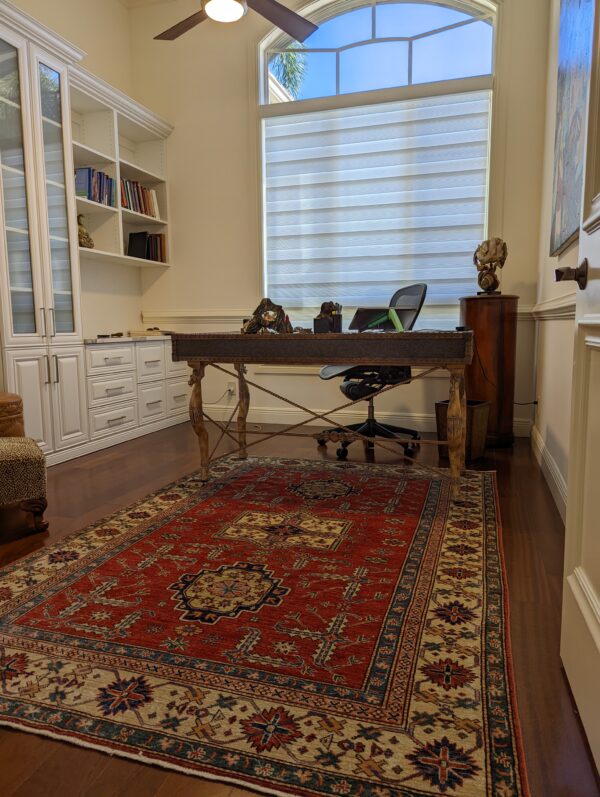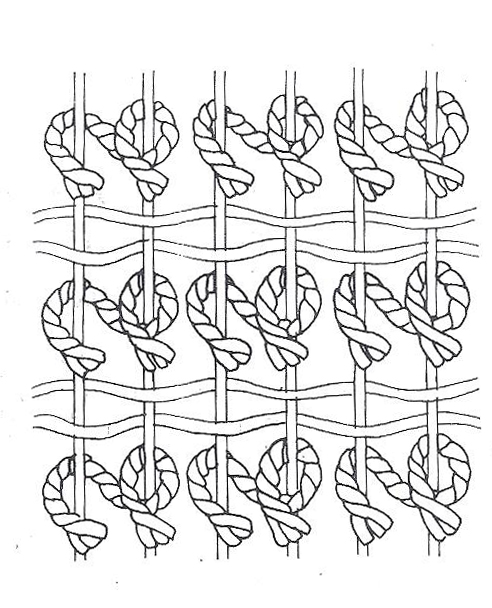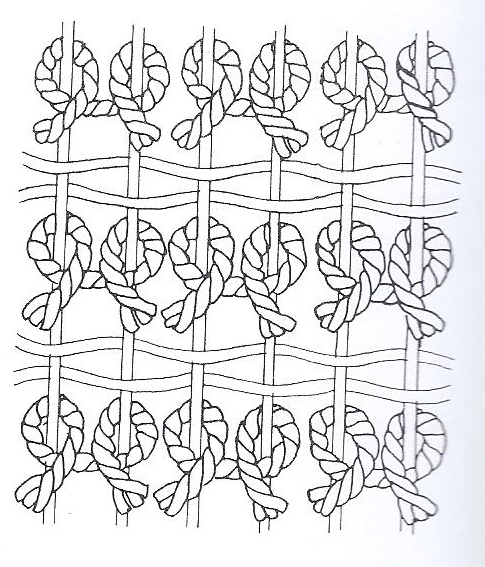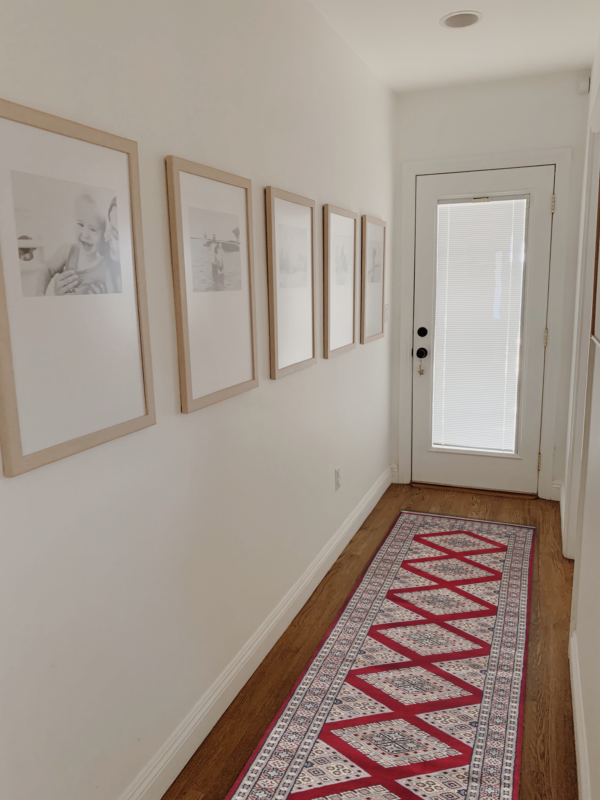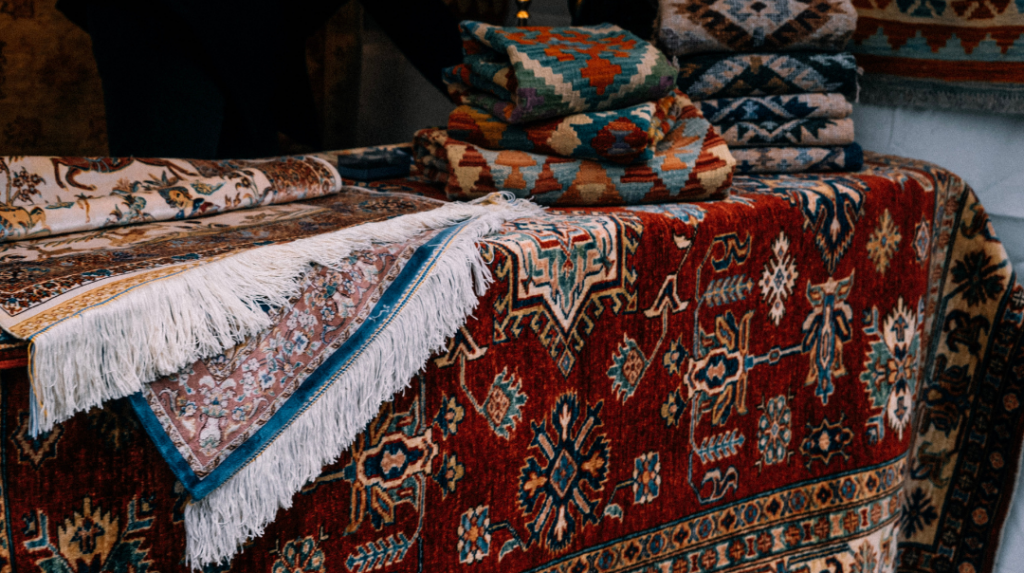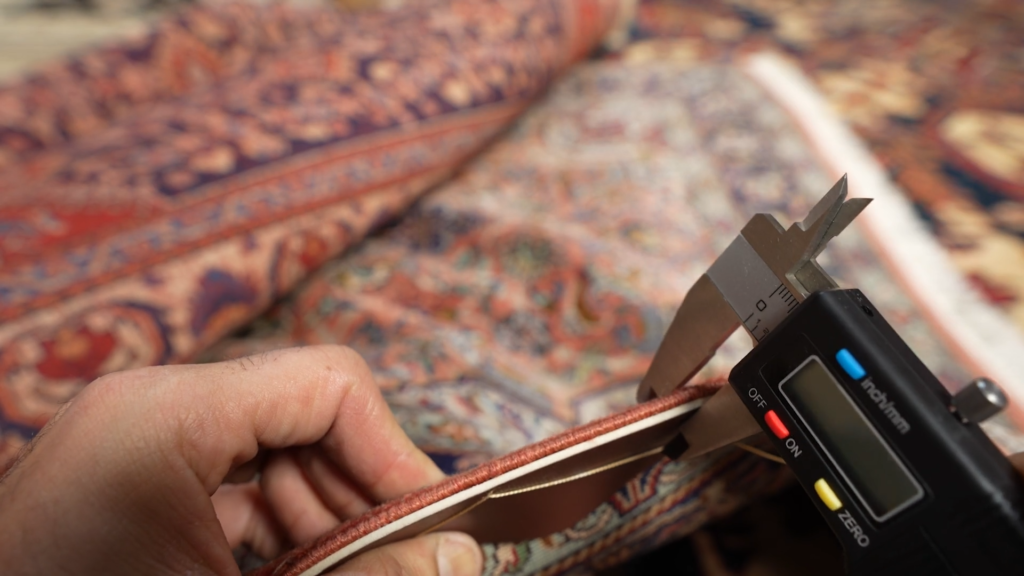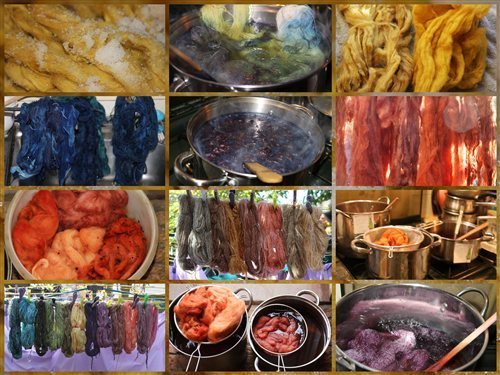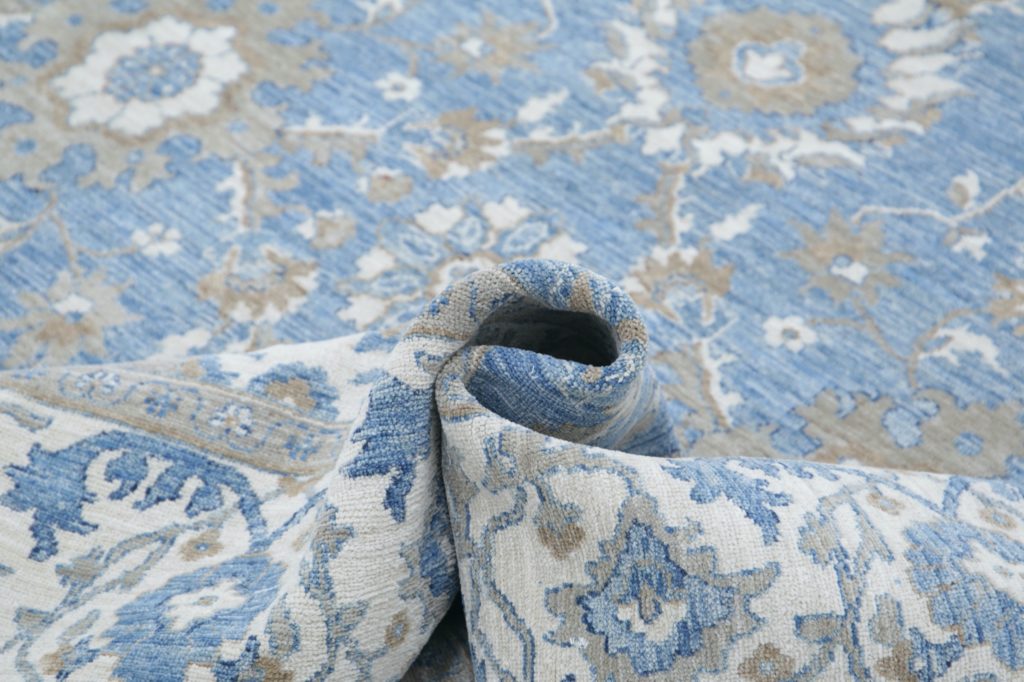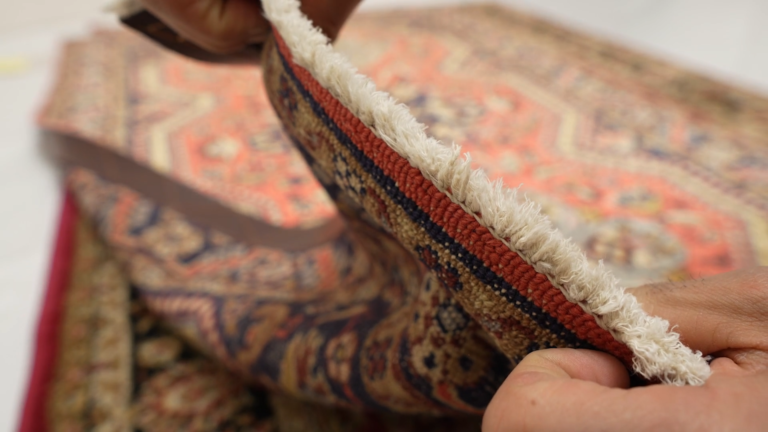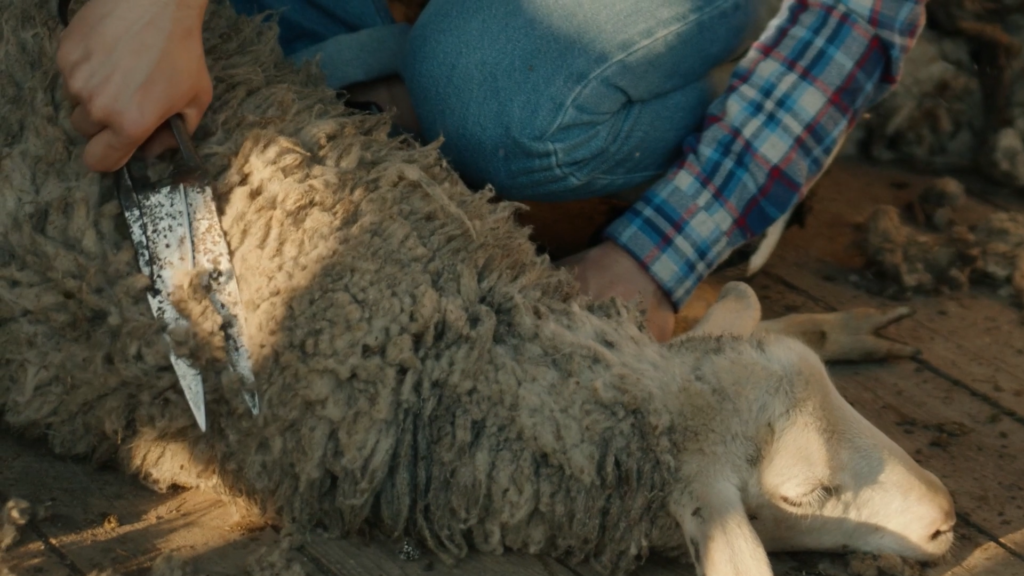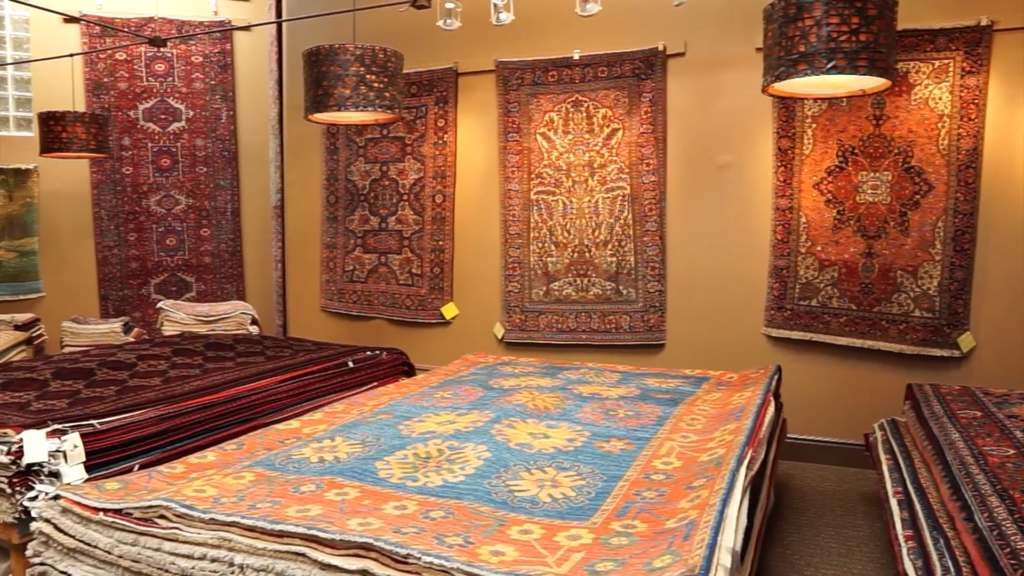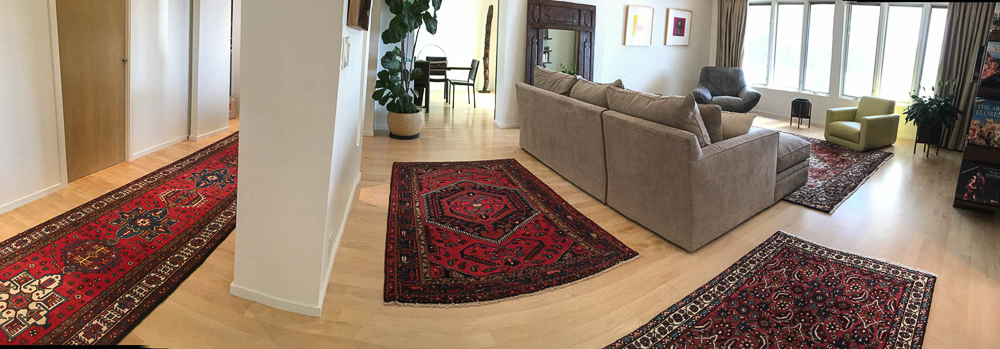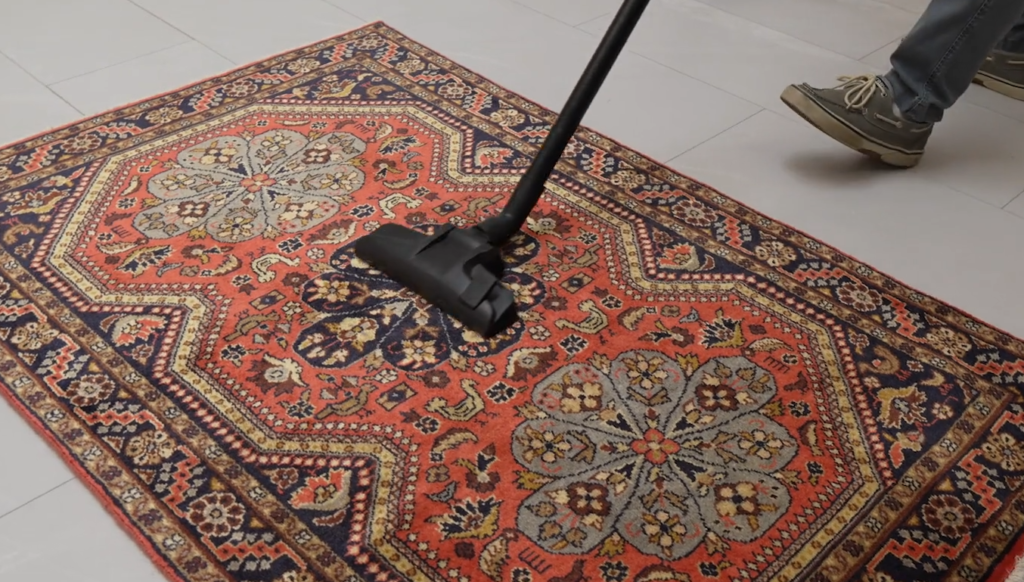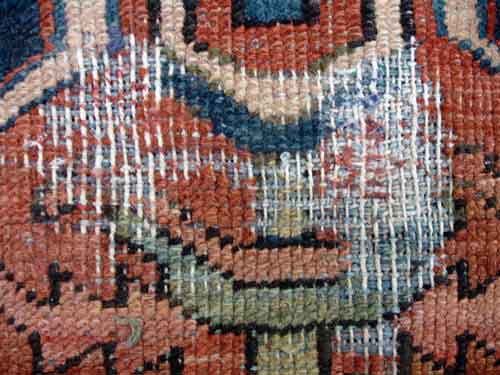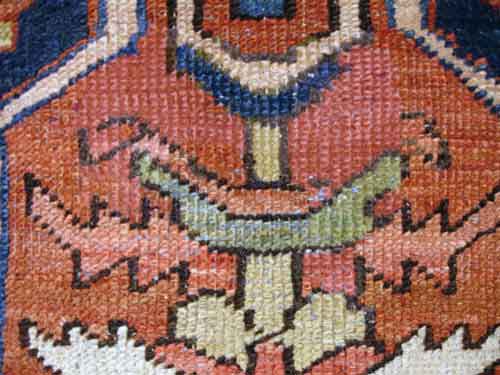Oriental Rugs
Oriental Rugs
If you’re in the market for a beautiful hand-knotted Oriental rug, there is much to consider. Sourcing, pricing, craftsmanship, and design features like size and color all factor into your choice.
Whether you are an experienced collector or dipping your toes for the first time, this guide will show you how to shop confidently. With so many options available, you will want to find the one that suits you the best!
What Makes an Oriental Rug Oriental?
An Oriental rug’s distinction lies in its geographical origin, craftsmanship, materials, and designs. These rugs originate from the “Orient,” which traditionally includes countries in Asia such as Iran (Persia), China, India, Russia, Turkey, Pakistan, Tibet, and Nepal.
Difference Between Persian Rugs and Oriental Rugs
When it comes to the world of fine carpets, the terms ‘Persian’ and ‘Oriental’ are often used interchangeably. However, key distinctions set these two types of rugs apart. Understanding these differences is crucial for anyone interested in purchasing a rug or simply appreciating the artistry of these woven masterpieces.
Here’s What We’ll Cover
Origin
The primary difference between Persian and Oriental rugs lies in their origins. ‘Persian’ rugs are specific to Iran, formerly known as Persia. In other words, all Persian rugs are Oriental rugs, but not all Oriental rugs are Persian rugs.
‘Oriental’ is a broader term that encompasses rugs made in various regions in Asia, including Iran (Persia), China, India, Russia, Turkey, Pakistan, Tibet, and Nepal.
Each region and country has a rich history of rug weaving, with unique styles, designs, and techniques that reflect their cultural heritage.
Design and Patterns
Persian rugs are renowned for their intricate designs and symmetrical patterns. Traditional Persian rug designs often feature a central medallion surrounded by floral, vine, and geometric motifs.
The colors are typically vibrant, with indigo and red being common shades. Persian rugs also often include a unique signature, typically woven into the rug’s border and identifying the weaver or the weaving house.
On the other hand, Oriental rugs reflect various design traditions, depending on the specific region.
For example, Turkish rugs often incorporate geometric designs, while Chinese rugs are known for their large, open fields and minimalist designs that often feature dragons and other traditional Chinese symbols.
Knotting Technique
Persian rugs are usually hand-knotted using the Persian or Senneh knot, which allows for more intricate, detailed designs. This knotting style involves looping the yarn around one warp thread, passing it under the next warp thread, and looping it back over.
In contrast, many other Oriental rugs, such as those from Turkey, use the Turkish or Ghiordes knot. This style involves looping the yarn over two warp threads and then pulling it back through the middle. The result is a more durable and less delicate rug than the Persian style.
In conclusion, while Persian and Oriental rugs are beautiful and valuable, their differences in origin, design, and construction techniques make each one unique. By understanding these distinctions, you’ll be better equipped to appreciate and choose the right rug.
Are Oriental Rugs Still in Style Today?
Absolutely! Oriental rugs have stood the test of time due to their unique artistry, quality, and versatility. They continue to be in style, adding a touch of elegance and warmth to any space. Their intricate designs and rich color palettes can enhance various interior design styles, from traditional and classic to modern and contemporary.
In modern decor, Oriental rugs often add texture, color, and a sense of history. They can be a focal point in a minimalist setting or blend harmoniously with a maximalist style. They also pair beautifully with mid-century modern, bohemian, and Scandinavian interiors.
Moreover, the trend of sustainable and ethical home decor further boosts the appeal of Oriental rugs. As handcrafted items made from natural materials, they are eco-friendly and sustainable, promoting a connection with traditional craftsmanship.
Investment Potential of Oriental Rug
Investing in Oriental area rugs can be an exciting venture combining art, history, and financial potential. These intricate handwoven treasures offer investors, collectors, and enthusiasts a unique opportunity to tap into a market rich in tradition and value.
Here’s why Oriental rugs can be a worthwhile investment:
1. Tangible Asset
Unlike stocks or bonds, Oriental rugs are tangible assets that you can appreciate in your daily life. They enhance your home’s beauty and comfort while holding their value over time.
2. Longevity and Durability
Oriental rugs are renowned for their durability as compared to machine-made rugs. They are hand-knotted using techniques passed down through generations, with high-quality materials designed to stand the test of time. With proper care, these rugs can last several decades and even increase in value.
3. Rarity and Uniqueness
The value of an Oriental rug is often tied to its rarity. Unique designs, repeating patterns, specific weaving techniques, and discontinued patterns can contribute to a rug’s rarity and, thus, its investment potential. In addition, older rugs and pictorial designs, especially those in excellent condition, can be particularly valuable.
4. Historical and Cultural Significance
Oriental rugs reflect the heritage and culture of the regions where they were crafted. Each hand-woven rug tells a story through its patterns, motifs, and colors. This cultural significance can add to a rug’s investment value, particularly as interest in cultural and historical art grows.
5. Market Demand
The market for Oriental rugs has remained strong over the years. There’s a robust demand for high-quality, authentic Oriental rugs domestically and internationally. While market trends for modern rugs fluctuate, the general demand for these beautiful art pieces remains constant.
6. Potential for Appreciation
Just like fine art or antiques, Oriental rugs can appreciate over time. Factors such as the rug’s condition, age, rarity, and provenance can all contribute to its value. While it’s not guaranteed, there is the potential for significant appreciation, especially for well-preserved, high-quality pieces.
Where to Start When Buying Your Next Oriental Rug
Oriental rugs are a piece of art, so the design is a significant factor and can be the main selling factor. But if you are interested in more than just the design and want to find a rug that suits your space, this guide will help you through the selection process with some criteria you may like to consider when shopping.
Before starting, consider a few things you must decide on before shopping, your mindset and your budget.
Mindset When Buying Oriental Rugs
The first thing to remember is that you purchase a piece of art that will go on your floor, providing you with utility and beauty. Because Persian and Oriental rugs are handmade, it is vital to be flexible when looking for a rug.
When choosing a one-of-a-kind piece, it is best to be flexible regarding the size, design, and colors. The selection process can be more straightforward when you go in open-minded, looking to fall in love with a piece of art.
The main things to keep in mind are:
You are shopping for a piece of art – You want to fall in love with a piece
Keep an open mind and be flexible with your criteria because these rugs are made by hand and one of a kind
Setting a Budget for Oriental Rugs Woven
Before beginning your shopping, take the time to decide your budget. Purchasing a Persian or Oriental rug is investing in a piece of art that will last for many generations. With good care and depending on the rarity and uniqueness of the rug, the value of the rug will increase over time.
Setting a budget can help you know what to look for when selecting a rug and what type will be within your price range.
Primary Criteria
Once you have developed a good mindset and decided on your budget, you are ready to consider the primary criteria.
The primary criteria include the following:
1. What Type of Room is Your Oriental Rug for
Whether your rug will be placed in your living room, dining room, or any other space can impact what to consider when choosing a rug. This helps you to narrow down some of the other criteria for your rug.
For example, if the rug is to be placed in your living room, you will need to decide if you want to place the rug underneath the couch or if you will place it in front of the furniture.
If the rug is in your dining room, you must ensure the size is large enough for your table and pull out the dining chairs. You will also want to focus on the border’s color, as this will be the main portion of the carpet you see.
To learn more about selecting a rug for different rooms, check out our guide to choosing a Persian rug for living rooms, bedrooms, and dining rooms.
2. Dimensions of Oriental Rugs
Selecting the dimension for your rug is important to be flexible. Measurement conversions, natural variability in handmade rugs, and the fringe length can all impact the size of rugs and may make it difficult to find an exact size.
Persian rugs always have fringes, so even when a rug may say it is 9’x12′, this dimension does not include the length of the fringe. Typically, you can add 1 to 2 inches to get the correct length, including the fringe, because the fringe on the edges of both ends can add about ½ inch to an inch to both sides.
It is also essential to consider that hand-knotted Oriental rug sizes can vary. Since these rugs are made using the metric system, the conversion often doesn’t give exact round numbers in feet. You can expect them to be shorter or longer than the given dimensions.
Oriental rug sizes are not accurate, so expect them to be shorter or longer than the given dimensions.
It’s a good idea to set absolute limits for dimensions that will fit in your room instead of looking for an exact size. Deciding on the largest size that your room can fit and the smallest size that would suit the space is a good idea so that you can work with a range of sizes.
Also, It’s best practice to measure your space and mark it with painter’s tape to see how the different sizes would look.
3. Oriental Rug Pile Height
The rug pile can be broken down into low, medium, and high piles. The pile refers to the thickness of the rug. When choosing the pile, some prefer a specific thickness, or how you intend to use the room can help determine which thickness works best.
If your rug will be used in a high-traffic area of your home, a high-pile rug is your best choice. The high pile allows it to withstand wear and tear more than a low pile rug. Good options to consider if you are looking for a high-pile rug are Heriz, Bijar, or Mashad rugs.
On the other hand, if the rug you are selecting needs to be able to go under a door, clearance is something you will need to consider. In this case, look at low to low-medium pile rugs. Baluchi, Kazak, or Turkoman rugs are great options for lower-pile rugs.
For more information on selecting the right pile height for your space, check out our article on why rug pile height matters.
4. Oriental Rug Colors
It is a good idea to be flexible with the color of the rug you choose. Most rugs will incorporate various color tones, giving you a variety of rich colors.
The main areas of colors are:
Field color – is the primary background color of the rug
Border Color – the color of the outline of the rug
Highlight Colors – Multiple colors can make up the details and highlights throughout the rug
Depending on the room you are using the Oriental rug in, it can help to decide which colors you want your rug to incorporate. Using a few accent colors within the room to complement the rug’s colors can help incorporate them into your design.
5. Brightness or Darkness
The brightness or darkness of a rug is related to the colors. So this can be a preference in your selection or serve as part of its utility.
If you are selecting a rug for your dining room, choose a darker rug to help hide any stains or spills.
The brightness or darkness helps narrow down which kind of rugs you want to consider because some rugs are brighter and others are darker.
6. Oriental Rug Designs
One of the most extraordinary things about Oriental rugs is that there are so many different options when it comes to designs. This depends on your preference and the room design you want to incorporate into the rug.
Some of the most popular design styles are –
These designs can come in an all-over or repeating pattern or with a medallion in the center. Besides these three popular designs, there are others, such as garden designs, various pictorial designs, prayer rugs, and hunting rugs.
Once you have settled on these primary items, you are ready to consider the secondary criteria.
Secondary Criteria
The decisions you made in the primary criteria will begin to dictate these secondary criteria, such as the type of rug, the knot density, the material, and the age.
1. Type of Oriental Rug
Now that you have already decided on your primary criteria, it will help narrow down the type of rug you are interested in. But, if you have an affinity for a particular type, you can focus on those. And if certain characteristics are offered in certain types of rugs, then you can focus on those because each type of Oriental rug has distinct characteristics.
Generally, the more popular the type of rug is, the more expensive it will be. So, for example, Tabriz, Kashan, or Mashad usually come at higher prices because they have higher demand.
There are three main categories that the types of rugs can be broken down into
2. Knot Density
The knot density you are looking for can be impacted by the design you are looking for. Knot density is sometimes an overrated criterion. Just because a rug has a higher knot density does not necessarily mean it is superior, depending on what you are looking for.
If you are looking for a geometric rug that doesn’t have a lot of detail, the knot density is not as crucial as some of the other primary criteria.
The Higher Knot Count Allows For A Clearer Design With More Intricate Details.
3. Materials
The material is generally broken down into what the pile and foundation are made of. Typically, the foundation is made of cotton, and the pile is made of wool. While there can be variations with silk foundations or piles, the type of material you will get depends on your design.
4. Age
Age is not necessary as long as the rug is in excellent condition. The prices of brand-new Persian rugs will be higher because the labor and materials cost increases yearly. Vintage and Antique rug prices also increase if they are in excellent condition because they are rare.
Factors Influencing Oriental Rug Pricing
1. Size
The larger the rug, the more expensive it will be. However, this isn’t always a rule, as a smaller rug with exceptional craftsmanship and rarity could be more valuable than a larger, more common piece.
2. Materials
Hand-knotted Wool rugs are the most expensive, followed by silk and cotton rugs.
3. Knot Density
The more knots per square inch, the denser the rug and the more expensive it will be.
4. Age and Condition
Older rugs in good condition can command high prices because of their rarity and the value associated with antiques. However, the condition is key here; a newer rug in excellent condition may be worth more than an older, damaged rug.
5. Design and Rarity
Unique designs or patterns can increase a rug’s value. Similarly, rugs from certain periods or specific weavers can be more valuable due to their rarity.
6. Provenance
Rugs with a known provenance, such as a rug once owned by a famous person, are typically more expensive than rugs without a known provenance.
7. Market Demand
Market demand and current trends play a significant role in determining the price of an Oriental rug. Certain styles, colors, or origins may be more popular at a particular time, driving up prices.
It’s important to note that these factors are all interconnected, and their impact on a rug’s price can be subjective. For this reason, it’s beneficial to consult with a knowledgeable rug dealer or appraiser when buying or selling an Oriental rug.
Learn more about how Persian rugs are priced.
Oriental Rug Construction
The construction of an Oriental rug is a time-honored process that combines technical skill, artistic flair, and a deep understanding of cultural traditions. Every step, from the choice of materials to the final knotting, contributes to the unique character and quality of these captivating works of art.
1. Selection of Materials
The initial stage in creating an Oriental rug involves selecting the right materials. Most Oriental rugs are made from wool, silk, or both. The choice of material significantly impacts the rug’s durability, feel, and appearance. High-quality wool provides a soft yet resilient texture, while silk offers an unparalleled sheen and intricate detailing.
2. Dyeing
After choosing the fibers, they are dyed using either natural or synthetic dyes. Natural dyes derived from plants, insects, or minerals have been used for centuries and often create more subtle colors. Synthetic dyes, on the other hand, offer a wider range of vibrant hues and are more resistant to fading.
3. Designing
Next comes the design phase. The patterns and motifs of Oriental rugs can be incredibly varied, reflecting the rich cultural heritage and regional influences of the rug-making area. Many rugs feature complex geometric patterns, intricate floral designs, or symbolic motifs. The design is usually drawn onto graph paper, creating a ‘map’ for the weavers to follow.
4. Weaving
Now, the weaving begins. Oriental rugs are typically hand-woven on a loom. The rug’s warp threads (vertical) and weft threads (horizontal) create the rug’s structure. The weaver then hand-knots individual strands of the dyed yarn onto the warp threads, following the design map. Two primary types of knots are used: the Turkish (Ghiordes) knot and the Persian (Senneh) knot.
5. Finishing
Once the weaving is complete, the rug is cut from the loom. The ends are secured to prevent the knots from unraveling, and additional finishing touches, like fringe, are added. The rug is then washed to remove dirt or debris from weaving and help set the dyes. Finally, the rug is left to dry in a controlled environment.
6. Inspection
Before the rug is ready for market, it undergoes a final inspection to ensure its quality and craftsmanship.
Where to Buy Woven Oriental Rugs
Finding the perfect Oriental rug is an exciting journey that may lead you through various avenues. From physical stores to online platforms, there are several places where you can explore and purchase these woven masterpieces.
Here’s a quick guide on where to shop for Oriental rugs:
1. Specialty Rug Stores
These stores focus solely on rugs and often have various Oriental rugs in different styles, sizes, and designs. The staff at these stores is usually knowledgeable and can guide you through the buying process. They can also provide valuable information about the rug’s origin, materials, and care instructions.
2. Antique Stores
If you’re interested in antique or vintage Oriental rugs, an antique shop is a great place to look. These stores often have a selection of older rugs with unique and rare designs. However, it’s crucial to ensure that the store is reputable and can provide information about the rug’s age and authenticity.
3. Auction Houses
Auction houses, both physical and online, occasionally have Oriental rugs on offer. This can be a great place to find unique and rare pieces. Before bidding, research the collection and possibly consult with a rug expert to understand the rug’s value.
4. Online Marketplaces
Many online retailers sell Oriental rugs. This is a convenient way to shop for rugs, as you can browse a wide selection from the comfort of your home. Be sure to check seller ratings and reviews, ask for additional information and photos, and understand the return policy before purchasing.
5. From private sellers
You may also be able to find Oriental rugs from private sellers. This can be a good way to get a good deal, but it is important to be careful, as there is no guarantee of authenticity or quality.
Oriental Rug Decor Tips
Oriental rugs, with their intricate designs and vibrant colors, can be the statement piece that brings a room together. However, integrating them into your interior design style requires a thoughtful approach. Here are some tips to help you showcase your Oriental rug to its best advantage:
1. Define Your Space: Oriental rugs are perfect for defining areas within your home. Use them to distinguish between different spaces in open floor plans, such as the living area from the dining area.
2. Size Matters: Choose a rug size that fits your space. For instance, all your furniture should sit on the rug in the living room. In a bedroom, the rug should extend beyond the foot of the bed. A rug that’s too small can make a room look disjointed, while one that’s too large might overwhelm the space.
3. Color Coordination: Oriental rugs come in various colors, from vibrant reds and blues to more subdued neutrals. Choose a rug color that complements your existing decor. A colorful rug can add a splash of visual interest if your space is filled with neutral tones. Conversely, a muted rug can provide balance in a brightly colored room.
4. Mix and Match: Don’t be afraid to mix patterns. An Oriental rug can pair beautifully with other patterns in your room if they share a common color palette. However, if your rug has a complex design, balance it with simpler patterns or solid colors in the rest of your room.
5. Layering: Layering rugs can add depth and texture to your space. You could place a smaller, vibrant Oriental rug on top of a larger, more neutral rug for an interesting and chic look.
6. Wall Decor: Not all rugs need to be underfoot. Consider hanging your Oriental rug on the wall as a unique piece of art. This can be especially useful for antique or delicate rugs you want to preserve.
7. Adapt to Any Room: Oriental rugs are versatile. They can add warmth to a cozy bedroom, sophistication to a dining room, or a welcoming feel to an entrance hall.
Oriental Rug Care
1. Vacuum Regularly: Maintain your rug or carpet’s vibrancy without a beater bar or brushes to prevent fiber damage.
2. Rotate Periodically: Rotate your rug every 6-12 months to ensure even wear and prevent fading, especially in high-traffic or sunlit areas.
3. Spot Clean: If spills occur, promptly blot them with a clean, damp cloth. Avoid rubbing to prevent spreading the stain.
4. Professional Cleaning: Every few years, consider a professional cleaning to remove embedded dirt and refresh the rug’s colors.
5. Avoid Direct Sunlight: Prolonged exposure can cause the rug’s colors to fade. Use curtains or blinds to shield your rug during peak sunlight hours.
6. Use a Rug Pad: A pad protects your rug from wear and slipping, adding to its longevity.
Remember, your Oriental rug is a piece of art—proper care will help maintain its beauty for years.
Oriental Rug Repair and Restoration
Many different types of damage can occur to Oriental rugs, including:
Pile wear: The pile of an Oriental rug is the soft, fluffy part you walk on. Pile wear can be caused by foot traffic, furniture, or pets.
Stains: Oriental rugs can be stained by various substances, including food, drinks, and chemicals.
Holes: Holes can be caused by various things, including accidents, pets, and pests.
Fading: The colors of an Oriental rug can fade over time due to exposure to sunlight or other environmental factors.
If your Oriental rug is damaged, it must be repaired or restored immediately. The longer you wait, the more difficult and expensive it will be to repair the damage.
There are two main types of Oriental rug repair:
Spot repair: Spot repair is used to repair small areas of damage, such as stains or holes.
Full restoration: Full restoration is used to repair more extensive damage, such as fading or major wear and tear.
The cost of Oriental rug repair and restoration will vary depending on the extent of the damage. However, replacing the rug is usually a fraction of the cost.
If your Oriental rug is damaged, it is important to have it repaired or restored by a qualified professional. This will help ensure the rug is repaired properly and lasts many years.
We hope this helpful article will guide you through making the perfect choice for your home!
Hand-Knotted Oriental Rugs
Oriental rugs come in the most breathtakingly diverse array of styles, colors and designs, with each type of rug having its own distinct characteristics, origins and weaving technique. So what is the one common thread that runs through them all? Interestingly, it’s the fact they are all hand-knotted. All Oriental rugs, whether they originate from Iran, India, Pakistan or Afghanistan, are always woven and knotted by hand. If you see a rug that is obviously machine made, no matter how strikingly similar it may be to a Gabbeh, a Bokhara or a Kashan rug, it is simply a replica. It is not the original.
Oriental Rugs Warps, Wefts And Knots
Most people walk into a carpet shop and are impressed with the wealth of choices that lay displayed everywhere but how many of us really think about the labor of love that goes into creating each rug?
In an oriental rug, every knot is made by hand. Weavers sit at the loom for hours on end, deftly weaving and knotting wool in various hues, creating a finished rug that has exotic patterns in deep, rich colors. A hand woven rug measuring 12 feet x 9 feet takes a minimum of 3000 hours just for the weaving. That’s more than 4 months and it does not even take into consideration the time spent on spinning and dyeing the wool or setting up the loom.
Let’s not forget those knots: A coarse Oriental rug has on average about 30 to 40 knots per square inch and a high quality Oriental rug can have a density of 300 or more knots per square inch. It’s difficult to even imagine the weavers’ patience and persistence.
Origin of Oriental Rugs
Most rugs are woven by nomadic tribes in remote hilly areas. The weavers use the knotting technique passed down by their ancestors and in the process of creating the pattern, they give free reign to their creativity, which adds to the variations. It’s absolutely amazing. Every Oriental rug tells a different story. If you look closely, you will notice that all the little design elements that may appear to be randomly chosen are actually depictions of the weaver’s narrative.
Types Of Oriental Rugs
Persian rugs
Persian rugs are the oldest type of rugs that you see and most other types of rugs are in some way or the other imitations of this original rug making style. Persian variations run the gamut from roughly woven tribal rugs such as Herez, Kurd and Hamadan to lush, high quality rugs such as Qum, Nain and Tabriz.
Indian rugs
Traditional rug making in Indian was initiated during the reign of Mogul Emperor Akbar during the 1500s. The techniques and styles used were mostly adopted from the Esfahan style, which originated in Esfahan, a city located south of Tehran in Persia.
Pakistani Rugs
Rug production in Pakistan can be traced back to the 1500s when skilled Persian weavers were brought into the country to create masterpieces for Akbar Shah. All Pakistani rugs still reflect their Persian heritage.
